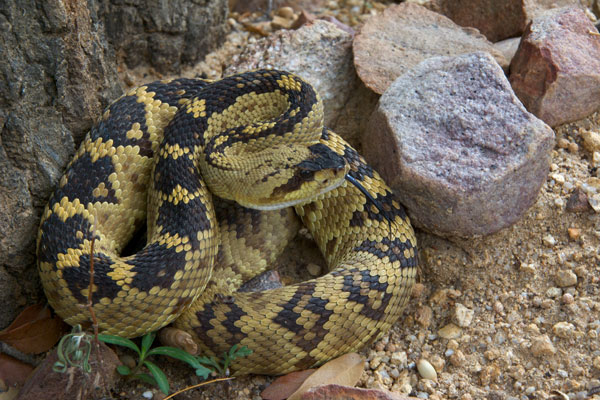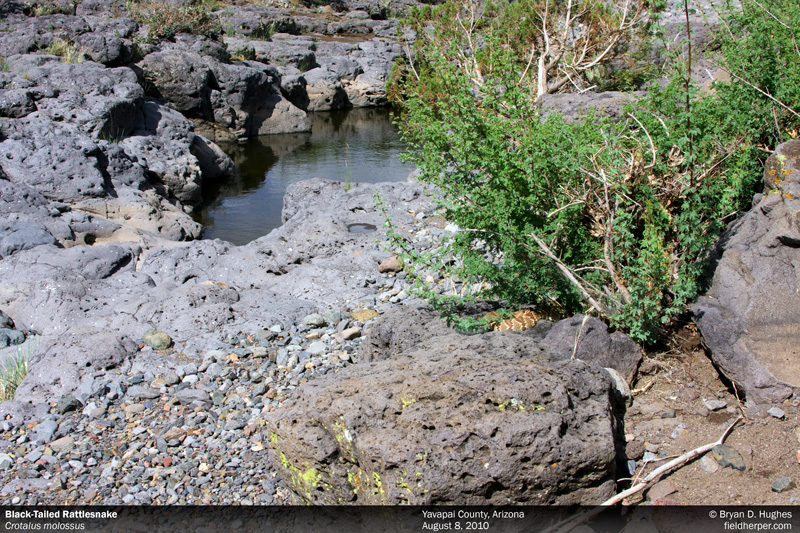Post by Ceratodromeus on Feb 1, 2016 3:51:08 GMT 5

Scientific classification
Kingdom: Animalia
Phylum: Chordata
Subphylum: Vertebrata
Class: Reptilia
Order:Squamata
Suborder: Serpentes
Family: Viperidae
Subfamily: Crotalinae
Genus: Crotalus
Species: C. molossus
Subspecies{1,2}
- C.m. molossus - Northern black tailed rattlesnake
- C.m. nigriscens - Mexican black tailed rattlesnake
- C.m. estabanensis - San estaban island black tailed rattlesnake
- C.m. oaxacus - Oaxan black tailed rattlesnake
Description
This is a mid sized species of rattlesnake, with an overall stunning appearance. They vary from subspecies to subspecies -- Estabenensis being a dull tawny brown or slate grey in coloration, while the nominate Molossus is typically a light brown or even gold in coloration. All subspecies share the characteristic black tail, which typically runs from about the vent to the beginning of the rattle. These snakes possess a rhombic patterning running down their back, which has the coloration that is darker then the rest of the body. Subspecies are recognized in differences in dorsal and head scale counts. Adult animals typically measure anywhere from 0.7-0.9m in total length, but large animals can measure up to 1.2m in total length{2,4}.

Geographic range and habitat utilization
This species of pit viper is endemic to the Southwestern United States, being found From southern California, down into Southern Mexico, and eastern Texas. Studies into the ecology of this particular species indicate it prefers rocky areas, but also dwell in flats. It is commonly encountered in burrows frequented by small mammals, but can be found in tight crevices as well, along with brush that provides them shelter from potential avian predators{3}.
Here, we see an animal in typical habitat.

These species have large, elliptical home ranges; Adult males have home ranges approximately 300m x 700m, while females have far smaller home ranges, 150 x 250m is typical for non-gravid females{5}.
Dietary habits
As adults, this species feeds on small to mid sized mammals. Desert cottontails(Sylvilagus audubonii), rock squirrels(Spermophilus variegatus), cliff chipmunks(Eutamias dorsalis), and white footed woodrats(Neotoma albigula) are staples in the diet of adults{5}. Young animals likely feed on small lizards, but have also been documented preying on small mammals. In one particular intriguing instance, a 20g neonate envenomated and killed a 26g brush mouse(Peromyscus boylii){5}.

Reproduction
Like all species of the Crotalus genus, the black tailed rattlesnake is oviparous. These snakes mate before inactivity in the winter months, which consists of the male persistently following the female, often hovering over her body whilst rapidly flicking his tongue along her back and near her vent. Once gravid, females do not move over vast expanses -- possessing small home ranges of two square meters.The female often gives birth in or in close proximity to her winter hibernaculum, with a litter size of 3-6 being typical{5}.The young stay near the maternal female for a day or so, as they are susceptible to predation at this vulnerable life stage almost fragile, as high temperatures, which bring upon dehydration, can be deadly to neonates. Neonate aggregation also reduced the risk of predation soon after birth, but the young are vulnerable as soon as they set out on their own.
References
{1} Bücherl, Wolfgang, Eleanor E. Buckley, and Venancio Deulofeu, eds. Venomous Animals and Their Venoms: Venomous Vertebrates. Vol. 1. Elsevier, 2013.
{2} Gloyd, Howard Kay. "A Mexican subspecies of Crotalus molossus Baird and Girard." (1936).
{3} Beck, Daniel D. "Ecology and energetics of three sympatric rattlesnake species in the Sonoran Desert." Journal of Herpetology (1995): 211-223.
{4} Klauber, Lawrence Monroe. "Rattlesnakes: Their Habits, Life Histories, and Influence on Mankind, Volume 1".
{5} Hardy Sr, David L., and Harry W. Greene. "Borderland blacktails: radiotelemetry, natural history, and living with venomous snakes." Toward Integrated Research, Land Management, and Ecosystem Protection in the Malpai Borderlands: Conference Summary. 1999.


